I recently read The Six by K.B. Hoyle and am currently reading the sequel in this six book epic fantasy series and loving it! So I was overjoyed that she consented to being asked all kinds of things about this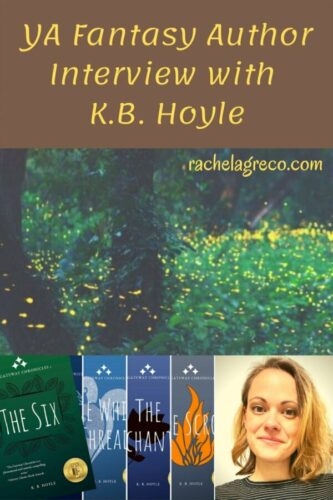 series and writing.
series and writing.
About the Book
Darcy Pennington hates her life. She is an insufferably average teenager with no true friends, crushing social anxiety, and an indescribable sense of not fitting in anywhere. When her parents force her to attend Cedar Cove Family Camp the summer before her eighth-grade year, Darcy once again finds herself on the outside of an established social circle.
But the camp holds secrets, and when Darcy begins to have strange experiences, she comes to believe she’s either losing her mind or on the brink of a discovery that could give her life purpose.
An unwitting tumble through a magical gateway landers her in a new world called Alitheia, and Darcy must convince five other teenagers at the camp to not only befriend her but follow her on a journey beyond their world and their wildest dreams to save Alitheia from an ancient, shadowy foe.
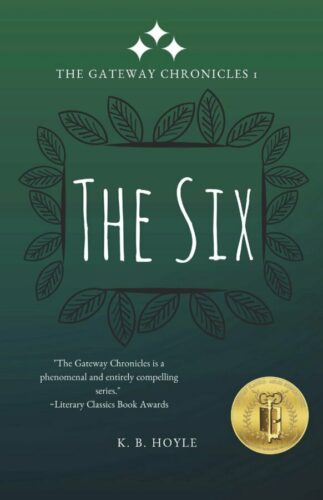
1. What inspired you to write The Six?
I was inspired to write The Six by my experiences as a child and young adult going to summer family camp in Upper Michigan. Every July, my family would meet with the same group of families at the same camp for one week of camping, hiking, sailing, sandcastles, smores… you name it. So I grew up with these lifelong friends that kind of only existed at this remote place that was uniquely special to all of us—and this was the 1980s – 1990s, so we didn’t have social media to keep up with each other or anything like that. We wrote letters back and forth, and sometimes we visited each other, but there was a special magic to this camp in Upper Michigan and our friendships that formed there and the adventures we enjoyed together.
As an adult, therefore, looking back, I really wanted to pay homage to those formational friendships and experiences. It just made sense to use them as the building blocks of an epic fantasy story.
2. Which character are you most like? Least like?
I am definitely most like Darcy Pennington, who is the main character in The Six. Adult readers may find her a little insufferable—and 13-year-old girls sometimes are insufferable. But that’s also how I was at that age. Darcy starts out rather self-absorbed at the beginning of the story; she doesn’t want to be stuck at family camp, she doesn’t want to make friends with the other kids, she feels misunderstood, etc. I think these are emotions that many teen and preteen readers can relate to, however, and I pulled a lot from my memories of being that age. Darcy’s emotional journey throughout the book parallels her physical journey, though, so by the end of the story, hopefully she’s come a long way.
I am definitely the least like the character Colin Mackaby. In The Six, he plays a minor role, but he goes on to play an increasingly more important role as the series progresses. Colin is someone who—at least at first—derives pleasure from hurting people. He’s a bully type, although as with most bullies, his tendencies come from a place of emotional vulnerability. Be that as it may, I will never understand the impulse to hurt others just for the sake of it, so he’s the character I am least like.
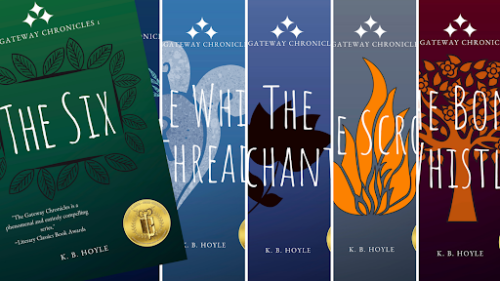 3. This book reminded me (in all the best ways) of The Chronicles of Narnia by C.S. Lewis. Did you draw from those books at all for this book?
3. This book reminded me (in all the best ways) of The Chronicles of Narnia by C.S. Lewis. Did you draw from those books at all for this book?
Because C. S. Lewis wrote the most famous (to date) portal fantasy ever published, there is no way to write a portal fantasy and not have someone look at it and say, “Oh, like The Chronicles of Narnia?” Which is fine, of course. I think it’s always a good day when someone compares you to C. S. Lewis. And I’m not sure where the line is between direct inspiration and just being intellectually honest about the fact that, as a modern fantasy writer I owe a great debt to Lewis for setting the standard in so many ways as to how this sort of story is to be told (if that makes sense).
That being said, I absolutely drew inspiration from him—I couldn’t help but do so! I am a longtime fan of C. S. Lewis and one of my characters is named for him in The Gateway Chronicles (of which The Six is book 1). Beyond being a fan, I’ve written at length on Lewis in other areas of my publishing world. For Gateway, I studied his writing methods to derive how best to write, how best to write fantasy, and how best to effectively tell a portal fantasy story. In The White Thread—book 3 of The Gateway Chronicles—I pay special homage to The Voyage of the Dawn Treader in a few ways that astute readers should pick up on.
None of this means that I “copied” The Chronicles of Narnia, though, nor did I ever mean or desire to. I was inspired and I sought to imitate what would make me a better writer, and that’s just good writing practice.
4. What was your favorite part to write?
Honestly, I’m having a hard time remembering what my favorite part of The Six was to write as far as a particular scene is concerned, as it’s now been thirteen years since I first wrote the book! I know it was a great deal of fun to revisit my camp memories and figure out how to translate good memories of a real place into a fantasy setting—and to build a fictional story around all of that—but I think my favorite parts to write were all the foundational friendships.
 There are so many of them in the story, and they all had to be different (because obviously every person we meet is a different person). Darcy had to befriend the other five kids, who have distinct personalities, of course, but she also has these people within Alitheia (the fantasy world) with whom she builds foundational, long-game relationships—relationships I knew from the get-go would change dramatically as the story progressed. I had a LOT of fun laying the foundations of these relationships knowing what they eventually would turn out to be—knowing (hoping) my readers would revisit book 1 after finishing the whole series and be like, “Ohhhhh, I see what she did there.” Playing the long game, building intentional relational moments… that’s really fun writing.
There are so many of them in the story, and they all had to be different (because obviously every person we meet is a different person). Darcy had to befriend the other five kids, who have distinct personalities, of course, but she also has these people within Alitheia (the fantasy world) with whom she builds foundational, long-game relationships—relationships I knew from the get-go would change dramatically as the story progressed. I had a LOT of fun laying the foundations of these relationships knowing what they eventually would turn out to be—knowing (hoping) my readers would revisit book 1 after finishing the whole series and be like, “Ohhhhh, I see what she did there.” Playing the long game, building intentional relational moments… that’s really fun writing.
5. What was the most challenging part of the writing process?
For me the most challenging part is holding myself back from diving into the writing so I can get my outline, worldbuilding, and character building properly established first. Even after so many books (I’ve written twelve), I still want to just sit down and write, but I know that the writing will come much easier and the end result will be so much better if I prepare the story properly before I write. And honestly, I do find it all relatively easy and fun these days (if and when the project is the right project for the right time), so maybe the most challenging part is actually finding time to write away from my four boys!
I will say, though, that writing The Gateway Chronicles was a little like putting together a puzzle box. There were so many prophecies and oracles and symbols and story threads and subplots that all had to resolve just so. I had spreadsheets on spreadsheets for bringing it all together in the end—and when and where everything was going to resolve. I spent a lot of sleepless nights worrying and working through and double-checking that I hadn’t made mistakes. But that’s why having my outlines before I started and having my story structure that guided my characters through their various arcs and that told me where various things logically belonged was (and always is) so important. I never would have pulled off the challenge of this six-book series without it.
6. What kind of research did you have to do for this book, if any?
The research I did for writing The Six (all of The Gateway Chronicles) mostly had to do with how to best write a novel, how to structure stories effectively . . . stuff like that. Going into writing this book—this series of books—I was keenly aware that this time I wanted to do things right (I’d already written one very terrible novel, and had floppy discs and jump drives filled with so many other unfinished attempts). So I did a lot of studying of my favorite books, classic books, and reading up on what makes successful books in my target audience and genre resonate with people. The book I took most to heart was How Harry Cast His Spell by John Granger, which I highly recommend, and I used as kind of an early how-to guide to write The Gateway Chronicles.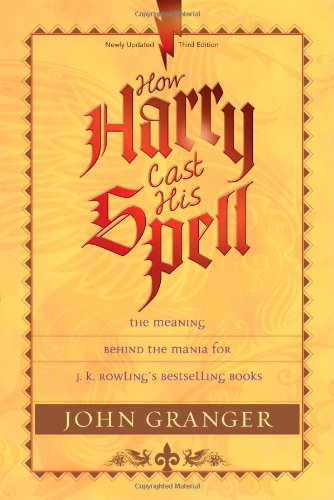
When it comes to content, there wasn’t really much I needed to learn that I didn’t already know (or couldn’t google). For example, I always jokingly (but truthfully) tell people that nearly all the injuries or illnesses sustained by the characters in the books are simply the injuries myself or my husband had sustained while I was writing, or were things either of us had (or have) personal experience with. In other words, there’s a lot of my life experience in these books!
7. When did you realize that the story would be more than a stand-alone book?
I planned the story as a series of six books, so The Six was never intended as a stand-alone and I never dreamed it up that way. I came up with one BIG story, which I sat down and loosely sketched/outlined out. And then I determined that it was a story that would best be told in six parts. It was important to me that each book be a self-contained story (with a beginning, middle, and end), but I also planned each book in the series to build on the one before it (like Harry Potter). So, people can just read The Six—the main conflict of that particular story is resolved by the end of that book—but the conflict of the metanarrative is not resolved, and in fact a little bit more conflict is added to the end of The Six to hopefully make people want to pick up book 2 (The Oracle) and read further. And with each successive installment, the story gets bigger and more complicated until the metanarrative is resolved in book 6 (The Bone Whistle), but every book does also tell its own contained story.
I knew it was going to be six years of work when I sat down and worked it out. I was teaching school full time at the time and figured out that I could outline each installment every spring and write each book every summer. That was the plan, at least, but things got a little crazy once the books got popular!
8. What led you to self-publish this series?
Well, there’s a little bit of a story here…
Way back in 2009, I self-published The Six after finishing it the year before because I was teaching fulltime, I had an infant and a toddler, I wanted to start writing book 2, and I was quite honestly too tired and worn way too thin to figure out querying again. I say “again” because I had already been through the query trenches with another book I’d written (that terrible novel I mentioned above) and had received so many rejections. I just wasn’t sure I could put myself through that again. We were very poor, as well, and I had my six-year plan in place for writing the series, and with only two summer months to write the next book while nursing an infant and planning for the next school year (and entertaining a toddler), I didn’t see how I could also make time for querying.
So I took the self-publishing plunge. I never wanted to be self-published—I always had big dreams of having a traditional book deal to legitimize myself and my writing—but there was no way to do everything. I was already only sleeping about four hours a night. But I was also paranoid that The Six would end up being one of those poorly edited, poorly received self-published books. I couldn’t afford to pay an editor; I couldn’t afford fancy cover design or formatting. The first edition was edited by a dear friend and it had a generic Amazon cover I designed. The formatting was terrible.
having a traditional book deal to legitimize myself and my writing—but there was no way to do everything. I was already only sleeping about four hours a night. But I was also paranoid that The Six would end up being one of those poorly edited, poorly received self-published books. I couldn’t afford to pay an editor; I couldn’t afford fancy cover design or formatting. The first edition was edited by a dear friend and it had a generic Amazon cover I designed. The formatting was terrible.
Amazingly, once I got it out for sale, people actually liked it. And I know readers overlooked a multitude of self-publishing sins in that first edition, but my students and their parents (primarily) became my first readers and they clamored and clamored for more. And they spread it to their friends, and it just slowly grew. I ended up self-publishing a revised first edition of The Six the following year when I released The Oracle, and I also self-published book 3, The White Thread, a year later.
But then I had gained some traction and I got the interest of a small press, so in late 2011, I signed with TWCS Publishing House and re-released books 1-3 with them all in 2012. Books 4-6 came out in 2012, 2013, and 2014 with TWCS. Then I went on to publish two more books with TWCS in 2015 and 2016 before TWCS unfortunately shut their doors.
After TWCS shut down, I got all the rights to my books back. There were a couple years where the only way people could get the books were to buy second-hand copies on Amazon, but that was unreliable at best, people were weekly emailing me to ask about them, and . . . I don’t get any royalties from second-hand sales! That’s when I decided to do another re-release of the entire series. To make it worth people’s while, the 2018 editions have added scenes and edits throughout.
So that is how The Gateway Chronicles started out (partially) self-published, were for a time with a publisher, and have ended up self-published once again. 🙂
9. I know you’ve written other books, though I have yet to read them. What can you tell us about them?
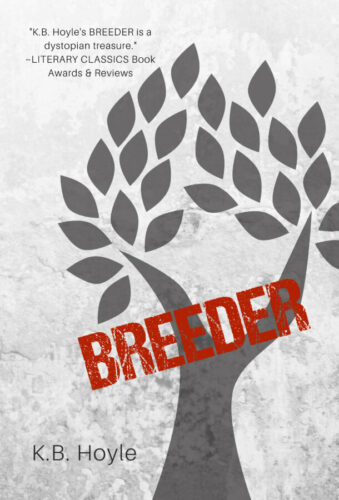 In addition to The Gateway Chronicles, I am the author of The Breeder Cycle, which is a New Adult Dystopian series made up of a trilogy and a bonus book. The bonus book, Hunter, can be read at any point of the series or read as a standalone. I was mid-publication on this series when TWCS shut down, so in 2019 I ended up re-releasing books 1 and 2 (Breeder and Criminal) and then writing and releasing book 3 (Clone) and Hunter.
In addition to The Gateway Chronicles, I am the author of The Breeder Cycle, which is a New Adult Dystopian series made up of a trilogy and a bonus book. The bonus book, Hunter, can be read at any point of the series or read as a standalone. I was mid-publication on this series when TWCS shut down, so in 2019 I ended up re-releasing books 1 and 2 (Breeder and Criminal) and then writing and releasing book 3 (Clone) and Hunter.
Except for Hunter, which is intended as a near-future apocalyptic novel, The Breeder Cycle is a story set 200 years in the future. The premise is that humanity has been all-but destroyed by three Great Devastations, and those who are in control of repopulating the earth have decided it can only be done along certain guidelines. The story follows Pria, an approved Breeder for the Controlled Repopulation Program, as she escapes the world she’s been brought up in to discover that humanity is beautiful and diverse, and the truth—if she can find it—just might set everyone free.
I have also written two books that are not yet published—but will be soon! A retelling of The Little Mermaid and a Middle Grade Science Fantasy novel. I’m very excited about both, and both will kick off new series.
About K.B. Hoyle
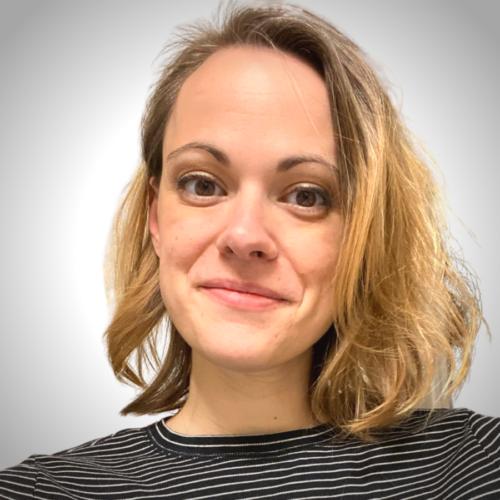 K. B. Hoyle is a multiple award-winning Young Adult author, a public speaker, and a creative writing instructor.
K. B. Hoyle is a multiple award-winning Young Adult author, a public speaker, and a creative writing instructor.
In addition to her many novels, she is a columnist at Christ and Pop Culture. She enjoys being a guest on many podcasts, and she has contributed articles and essays to a variety of publications. She stays busy at her home in Wisconsin with her husband and their four sons.
Where to Find K.B. Hoyle and Her Books
Website: http://www.kbhoyle.com/
Books: http://www.kbhoyle.com/books.html
Instagram: https://www.instagram.com/kbhoyle.author
Twitter: @kbhoyle_author
Facebook: https://www.facebook.com/kbhoyle.author
Do you think you’ll pick up one of K.B. Hoyle’s books now? They’re worth it!
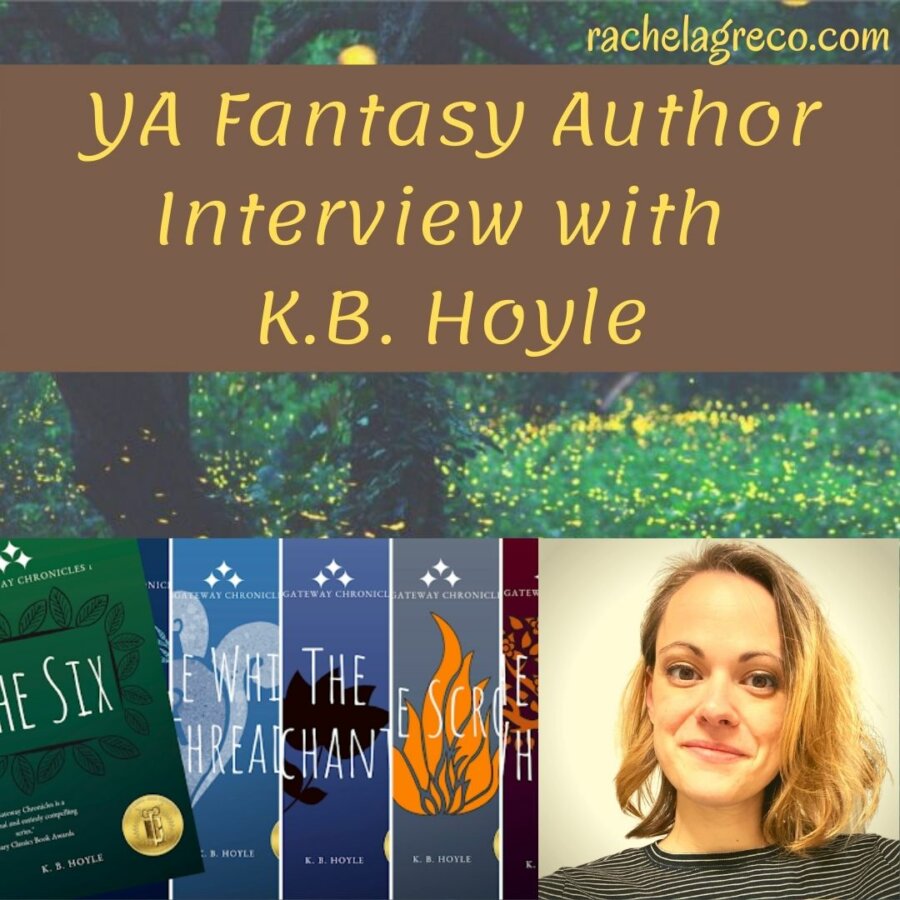
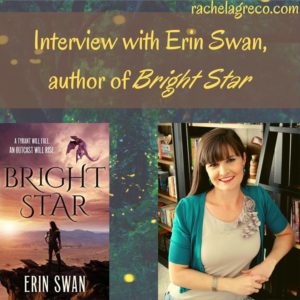
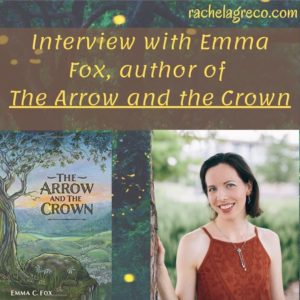
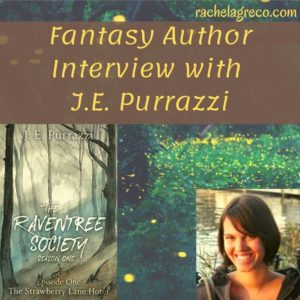
I love K.B. Hoyle’s books, and can’t wait to read her upcoming releases! Thanks for featuring her here!
I’m really enjoying her Gateway Chronicles and look forward to reading more of her books!